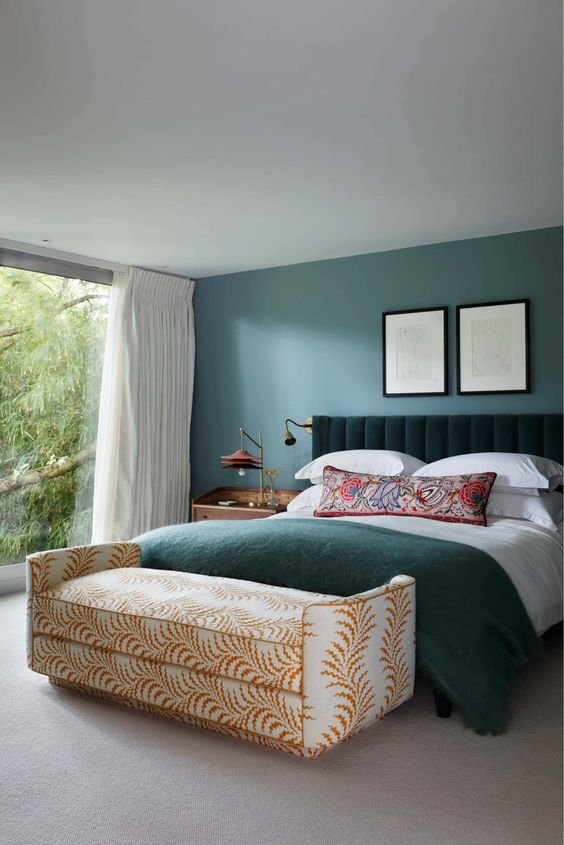The lowdown on Linen
Linen fabric is an absolute superstar when it comes to clothes and bedding. But did you also know that it’s just as excellent for use within interiors? From effortless linen curtains to hardwearing upholstery and textured cushions, there are lots of reasons why I use linen in many of my interior design projects and is a must-have in any home.
Made from the fibres of the flax plant, it requires no fertilisers or pesticides and far less water to grow than other plants such as cotton – making Linen one of the most eco-friendly fabrics around! There is also no wastage because every part of the flax plant can be used, so you can be sure you’re minimising your impact on the environment while also creating a beautiful home.
Bedroom by Studio Ashby
Other benefits of using linen include:
Highly absorbent: Can absorb and lose water rapidly, quickly removing perspiration from the skin.
Good conductor of heat: In winter it keeps the heat in. In summer it feels cool to the touch and creates a feeling of coolness and comfort.
Easy care for the long term. Resists dirt and stains, has no lint or pilling tendency, and can be dry cleaned, machine washed or steamed. Withstands high temperatures and yields minimal initial shrinkage. Gets softer the more it is washed, and doesn't fade.
Strongest of the vegetable fibres. Has 2 to 3 times the strength of cotton, enduring up to 20 years of use.
Unique antibacterial qualities: Contains natural antiseptic that prevents bacterial growth. Helps kill microbes, thereby preventing fungal diseases, inflammation, and damaged skin infection.
Environmental filter: To a degree, protects from a chemically aggressive environment, noise, dust, radiation, gamma rays, and electromagnetic waves.
Strongest energy of all fibres: Creates a feeling of calm, concentration and depth of thought. Psychotherapists agree that linen fibres have an ability to protect a person from depression, nervous and psychotic breakdowns.
To find out more about how we can integrate the use of linen in your home to create a softer, more sustainable and calmer home, click here to get in touch.


